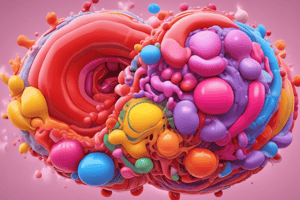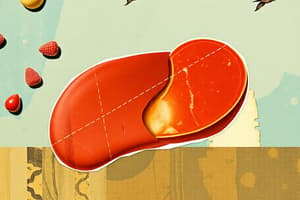Podcast
Questions and Answers
What are lipoproteins and how do they facilitate the transportation of cholesterol and triglycerides?
What are lipoproteins and how do they facilitate the transportation of cholesterol and triglycerides?
Lipoproteins are complex particles that contain cholesterol esters and triglycerides surrounded by free cholesterol, phospholipids, and apolipoproteins. They facilitate the transportation of cholesterol and triglycerides by forming a central core and interacting with proteins.
What are the seven classes of plasma lipoproteins based on?
What are the seven classes of plasma lipoproteins based on?
The seven classes of plasma lipoproteins are based on size, lipid composition, and apolipoproteins.
Which lipoproteins are pro-atherogenic and which one is anti-atherogenic?
Which lipoproteins are pro-atherogenic and which one is anti-atherogenic?
Chylomicron remnants, VLDL, IDL, LDL, and Lp (a) are pro-atherogenic, while HDL is anti-atherogenic.
What are the four major functions of apolipoproteins?
What are the four major functions of apolipoproteins?
What is the exogenous lipoprotein pathway and how does it start?
What is the exogenous lipoprotein pathway and how does it start?
Flashcards are hidden until you start studying




